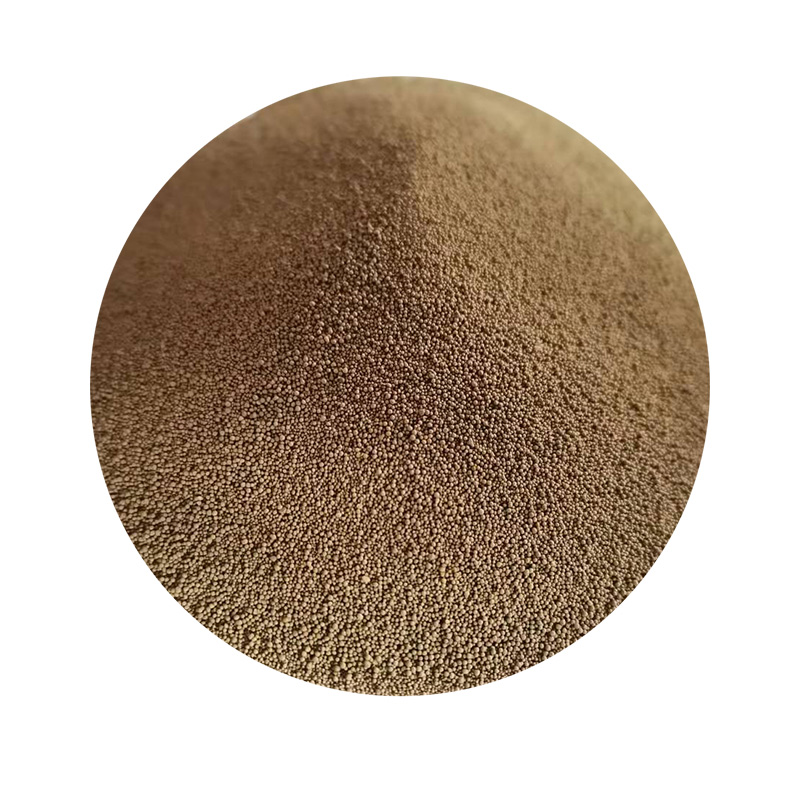Sand for Casting The Essential Material in Metal Foundry Operations
Casting is a well-established manufacturing process where molten metal is poured into a mold to solidify, taking on the shape of the cavity. Among various materials used in the casting process, sand stands out as a vital ingredient, making it one of the most common mediums employed in the metal foundry industry. This article explores the properties, types, and applications of sand in casting, as well as its advantages and challenges.
Importance of Sand in Casting
Sand serves as the primary material for creating molds and cores in the casting process. Its unique characteristics make it especially suitable for foundry applications. The most significant attribute of sand is its ability to withstand high temperatures, allowing it to hold its shape when in contact with molten metal. Additionally, sand is abundant, cost-effective, and can be easily shaped or formed, which is critical for creating intricate designs and components.
Types of Sand Used in Casting
Several types of sand are utilized in the casting process, each with specific properties that cater to different requirements
1. Silica Sand This is the most commonly used type of sand in casting. Composed mainly of silicon dioxide, silica sand is known for its high thermal stability and excellent molding qualities. It is versatile and can be used for various types of metal casting, including aluminum and iron.
2. Green Sand Comprising a mixture of silica sand, clay, water, and other additives, green sand is widely favored for its ability to retain moisture. This type of sand is used for making molds that are not yet dried or baked, meaning they can provide excellent surface finishes and dimensional accuracy.
3. Resin-Sand This sand is coated with synthetic resins, which harden when exposed to heat. Resin-sand molds can achieve finer details and superior surface quality compared to green sand molds. It is particularly used in high-precision applications and where complex geometries are required.
sand for casting

4. Investment Casting Sand Also known as lost wax casting, this process uses a special type of sand that allows for exceptionally smooth finishes and intricate designs. Investment casting is often employed in industries requiring high-precision components, such as aerospace and medical devices.
Advantages of Using Sand in Casting
There are several advantages to using sand as a casting material
- Cost-Effectiveness Sand is relatively inexpensive compared to other molding materials, making it an economical choice for high-volume production. - Reusability Many types of casting sands can be reclaimed and reused multiple times after a thorough cleaning process, thereby reducing waste and production costs. - Versatility Sand molds can be adapted for various metal types and complex part geometries, providing flexibility in design and application. - Thermal Properties Sand can absorb heat efficiently, which helps to regulate the cooling process of molten metal, leading to improved quality and reduced defects in the final cast product.
Challenges and Limitations
Despite its many advantages, using sand in casting does present certain challenges
- Permeability While good for gas passage, excessive permeability can lead to issues like blowholes in castings, affecting the integrity of the final product. - Cracking and Shrinkage Sands can experience cracking or shrinking during the drying or cooling phase, which can result in dimensional inaccuracies. - Environmental Concerns The sand casting process can produce significant waste and environmental impacts if not managed properly. Dust emissions and the disposal of used sand can pose ecological challenges.
Conclusion
In conclusion, sand remains a fundamental material in the field of metal casting, valued for its versatility and cost-effectiveness. The choice of sand type can significantly influence the quality and precision of the casting process, which is crucial across various industrial sectors. While there are inherent challenges in utilizing sand, advancements in technology and methods continue to optimize its use, ensuring that foundries can produce high-quality components efficiently and sustainably. Understanding the properties and applications of different types of sand is essential for foundry professionals aiming to enhance their casting processes and maintain competitive advantages in the industry.
Post time:নভে. . 20, 2024 17:45
Next:با شن در چشمهسازی روبرو میشوند
